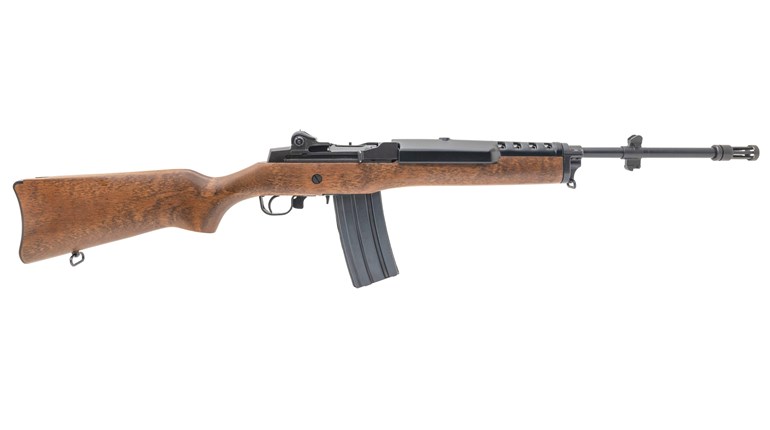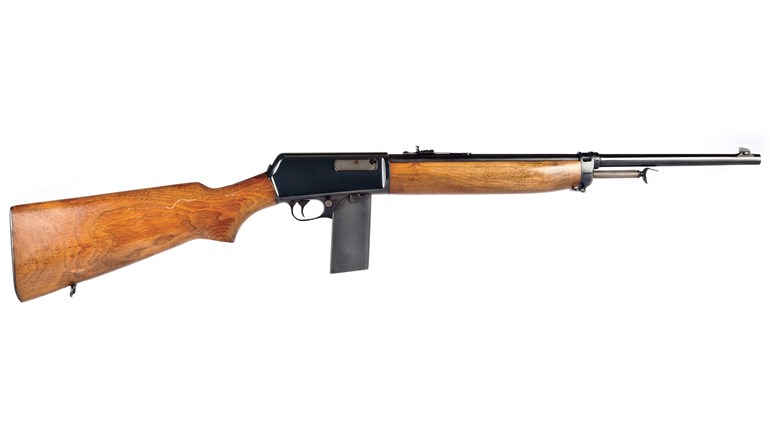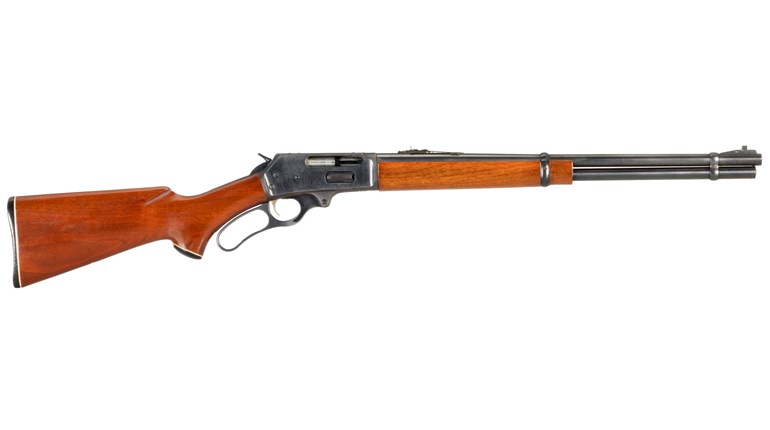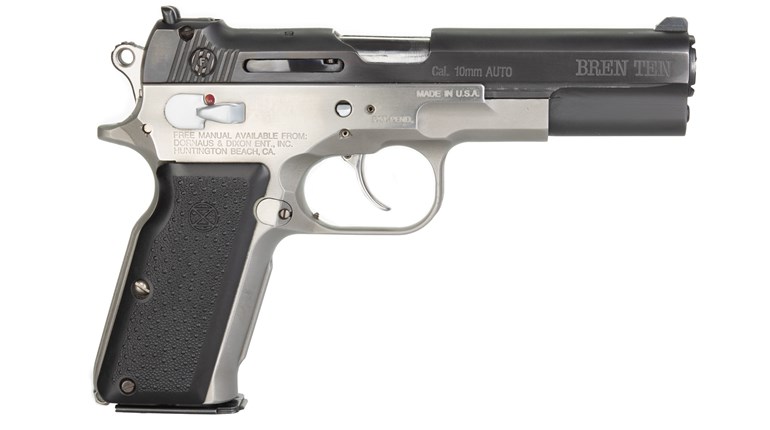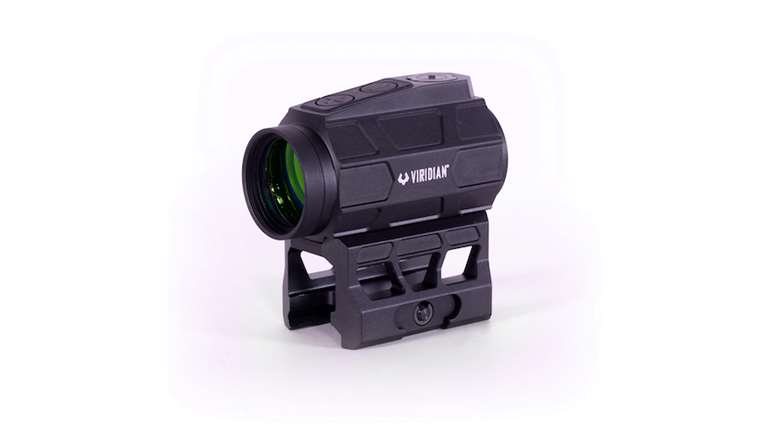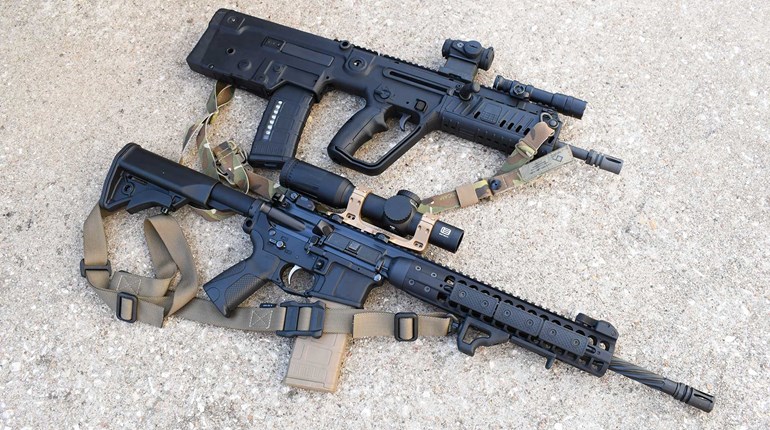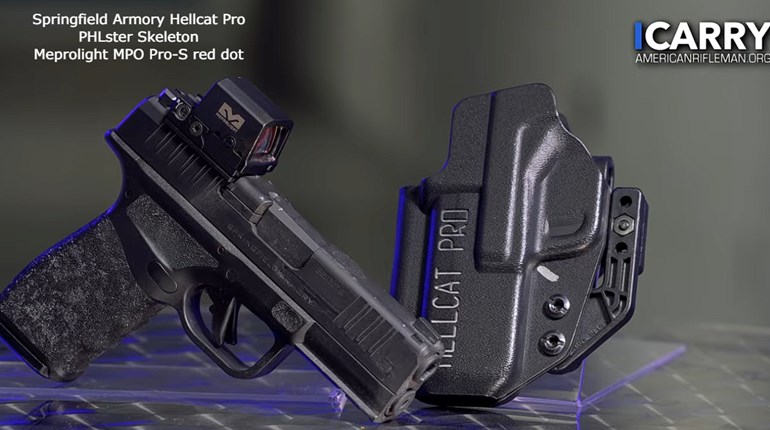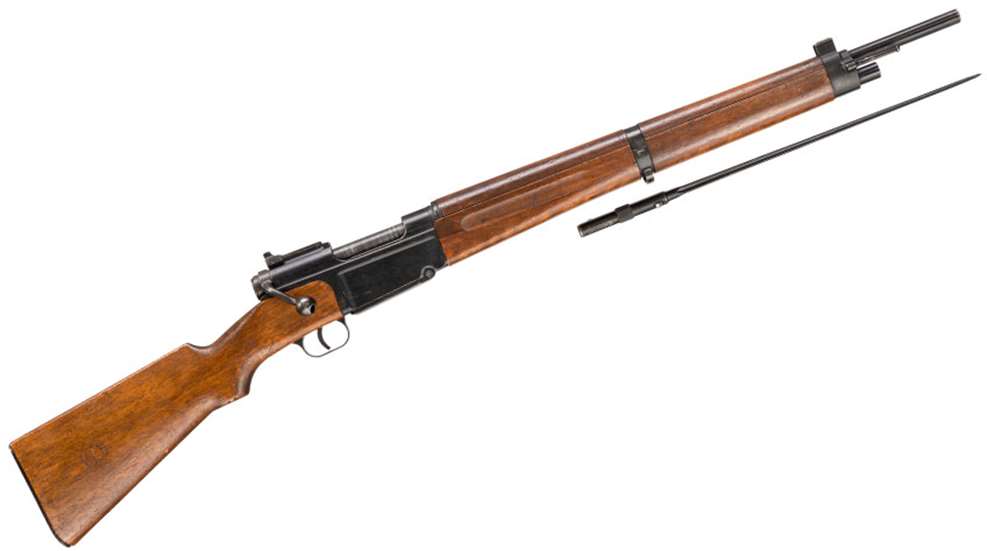
The First World War taught the French some important lessons about modern combat, particularly about service rifles. First of all, there was a general recognition of the fact that the 8x50 mm R cartridge left a little to be desired. It was a bit overpowered and its rimmed design created engineering problems for box-magazine feeding. By the standards of the year it entered service (1886), that cartridge was at the cutting edge of innovation. By the 1920s, though, it was presenting more problems than it was solving in terms of rifle design and it was, therefore, time to move on. To do so though would mean adopting a new cartridge, which would also mean that the days of the Lebel and the Berthier had finally come to an end. In 1924, the new 7.5x57 mm cartridge entered service, finally giving France the kind of rimless, bottleneck rifle ammunition that was more appropriately suited for box-magazine feeding.
This new ammunition ran the Fusil-Mitrailleur Modèle 1924 perfectly, but there was a problem: The new cartridge was too similar to the German 7.92x57 mm cartridge. With millions of surplus Mauser rifles and ammunition for them in abundant supply in the post-Armistice era, the potential for disaster was just all too real. To avoid the dangers of confusing the two cartridges, the French introduced 7.5x54 mm in 1929, which settled the matter once and for all. The two cartridges were dissimilar enough that confusion and the accidents quickly disappeared. In the same year, the Fusil-Mitrailleur Modèle 1924 M29 in the new chambering was adopted—beginning a service history that would last a half-century. Now that the kinks were worked out of the new cartridge, the French went to work designing a rifle to accept it.

The concept that emerged at Manufacture d’Armes de Saint-Étienne was a simple cock-on-open, bolt-action receiver feeding from a clip-fed, staggered-row, five-shot internal magazine. A 22-inch barrel gave the gun a compact overall length of just 40 inches, making it more practical for the modern battlefield than the old Lebel rifle, which was more than 11 inches longer. Visually, the new design presented an altogether different look than previous French service rifles mainly because of its slab-sided receiver, two-piece wooden stock and the flat-black, painted finish on its metal parts. In addition to that, a 17-inch spike bayonet was mounted on a tube beneath the barrel rather than on it, and the blade could be stowed in that tube when not in use. Another feature that set it apart from previous French service rifles was the sighting system. The rear sight assembly consisted of an adjustable, tangent-type aperture with graduations from 100 to 1,200 meters in 100-meter increments, and the front sight was a milled post protected by a pair of open ears.
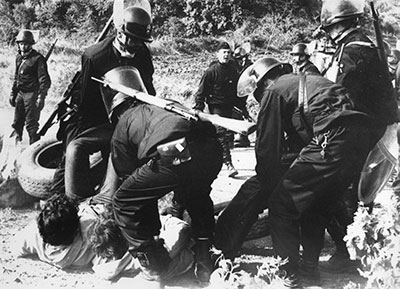
While all of that was not in and of itself different or unique, the way that it was sighted in was. At the factory, one of 25 different rear apertures would be installed to zero the gun. Each of the 25 apertures provided minor vertical and/or horizontal differences and, once the correct one was found that made it possible to zero the gun, that aperture was set and could not be adjusted further. Basically, the zero was fixed by a trained armorer, but the shooter in the field could adjust the elevation of the aperture depending on the range to the target. This was a bit of a new approach to a system for sighting in a rifle, and this one feature alone reveals the extent to which the engineers at Saint-Étienne were thinking outside the box when they designed this firearm.
Designated the MAS Modèle 36, the rifle served the French military in the years immediately preceding the outbreak of the Second World War. It served notably during the 1940 campaign and served again during the campaign of liberation in 1944. In 1945, it crossed into Germany and played an important role in defeating the Third Reich. In the aftermath of the conflict, the MAS-36 continued to serve and even went back into production with a few minor modifications to the design. Because of this, it was a part of the many conflicts of decolonization that unfolded during the Cold War in Southeast Asia and Africa. It has even been observed still serving in recent Middle Eastern conflicts, which provides proof positive that, although the design of the MAS-36 is now more than 8 decades old, it can still serve effectively here in the 21st century. From the streets of Dunkirk to the streets of Idlib, the MAS-36 is one of the most successful military bolt-action rifles ever made.












